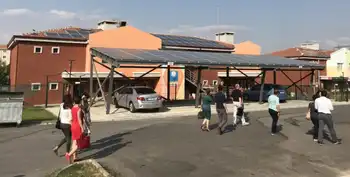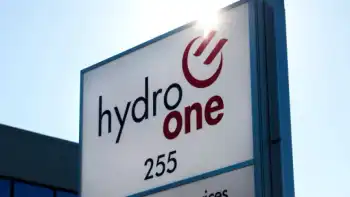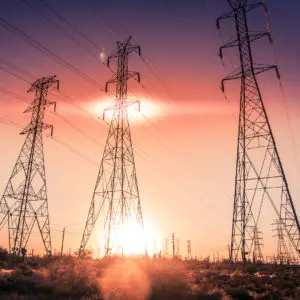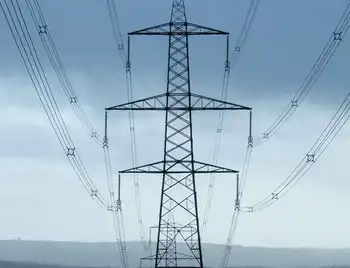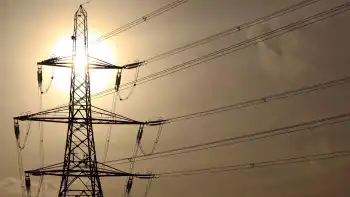Solar power outshining Colorado's gas industry
By Associated Press
Protective Relay Training - Basic
Our customized live online or in‑person group training can be delivered to your staff at your location.

- Live Online
- 12 hours Instructor-led
- Group Training Available
For the Shaw brothers, who converted the downtown arts building and community center into a miniature solar power plant two years ago, each reverse rotation subtracts from their monthly electric bill. It also means the building at that moment is producing more electricity from the sun than it needs.
"Backward is good," said John Shaw, who now runs Shaw Solar and Energy Conservation, a local solar installation company.
Good for whom?
As La Plata County in southwestern Colorado looks to shift to cleaner sources of energy, solar is becoming the power source of choice even though it still produces only a small fraction of the region's electricity. It's being nudged along by tax credits and rebates, a growing concern about the gases heating up the planet, and the region's plentiful sunshine.
The natural gas industry, which produces more gas here than nearly every other county in Colorado, has been relegated to the shadows.
Tougher state environmental regulations and lower natural gas prices have slowed many new drilling permits. As a result, production — and the jobs that come with it — have leveled off.
With the county and city drawing up plans to reduce the emissions blamed for global warming and Congress weighing the first mandatory limits, the industry once again finds itself on the losing side of the debate.
A recent greenhouse-gas inventory of La Plata County found that the thousands of natural gas pumps and processing plants dotting the landscape are the single largest source of heat-trapping pollution locally.
That has the industry bracing for a hit on two fronts if federal legislation passes.
First, it will have to reduce emissions from its production equipment to meet pollution limits, which will drive up costs. Second, as the county's largest consumer of electricity, gas companies probably will see energy bills rise as the local power cooperative is forced to cut gases released from its coal-fired power plants or purchase credits from other companies that reduce emissions.
"Being able to put solar systems on homes is great, you take something off the grid, it is as good as conserving," said Christi Zeller, the executive director of the La Plata Energy Council, a trade group representing about two dozen companies that produce the methane gas trapped within coal buried underground.
"But the reality is we still need natural gas, so embrace our industry like you are embracing wind, solar and the renewables," she said.
It's a refrain echoed on the national level, where the industry, displeased with the climate bill passed by the House this summer, is trying to raise its profile as the Senate works on its version of the legislation.
In March, about two dozen of the largest independent gas producers started America's Natural Gas Alliance. In ads in major publications in 32 states, the group has pressed the case that natural gas is a cleaner-burning alternative to coal and can help bridge the transition from fossil fuels to pollution-free sources such as wind and solar.
"Every industry thinks every other industry is getting all the breaks. All of us are concerned that we are not getting any consideration at all from people claiming they are trying to reduce the carbon footprint," said Bob Zahradnik, the operating director for the Southern Ute tribe's business arm, which includes the tribes' gas and oil production companies. None is in the alliance.
Politicians from energy-diverse states such as Colorado are trying to avoid getting caught in the middle. They're working to make sure that the final bill doesn't favor some types of energy produced back home over others.
At a town hall meeting in Durango in late August, Sen. Mark Udall, who described himself as one of the biggest proponents of renewable energy, assured the crowd that natural gas wouldn't be forgotten.
"Renewables are our future... but we also need to continue to invest in natural gas," said Udall, D-Colo.
Much more than energy is at stake. Local and state governments across the country also depend on taxes paid by natural gas companies to fund schools, repair roads and pay other bills.
In La Plata County alone, the industry is responsible for hundreds of jobs and pays for more than half of the property taxes. In addition, about 6,000 residents who own the mineral rights beneath their property get a monthly royalty check from the companies harvesting oil and gas.
"Solar cannot do that. Wind cannot do that," said Zeller, whose mother is one of the royalty recipients. In July, she received a check for $458.92, far less than the $1,787.30 she was paid the same month last year, when natural gas prices were much higher.
Solar, by contrast, costs money.
Earlier this year, the city of Durango scaled back the amount of green power it was purchasing from the local electric cooperative because of the price. The additional $65,000 it was paying for power helped the cooperative, which is largely reliant on coal, to invest in solar power and other renewables.
"It is a premium. It is an additional cost," said Greg Caton, the assistant city manager.
Instead, the city decided to use the money to develop its own solar projects at its water treatment plant and public swimming pool. The effort will reduce the amount of power it gets from sources that contribute to global warming and make the city eligible for a $3,000 rebate from the La Plata Electric Association.
Yes, the power company will pay the city to use less of its power. That's because the solar will count toward a state mandate to boost renewable energy production.
"In the typical business model, it doesn't work," said Greg Munro, the cooperative's executive director. "Why would I give rebates to somebody buying someone else's shoes?"
The same upfront costs have prevented homeowners from jumping on the solar bandwagon despite the tax credits, rebates and lower electricity bills.
Most of Shaw's customers can't afford to install enough solar to cover 100 percent of their homes' electricity needs, which is one reason why solar supplies just a fraction of the power the county needs.
The higher fossil-fuel prices that could come with climate legislation would make it more competitive.
"You can't drive an industry on people doing the right thing. The best thing for this country is if gas were $10 a gallon," said Shaw, as he watched two of his three full-time workers install the last solar panels on a barn outside town.
The private residence, nestled in a remote canyon, probably will produce more power from the sun than it will use, causing its meter to spin in reverse like the Smiley Building's. The cost, however, is steep: more than $500,000.





